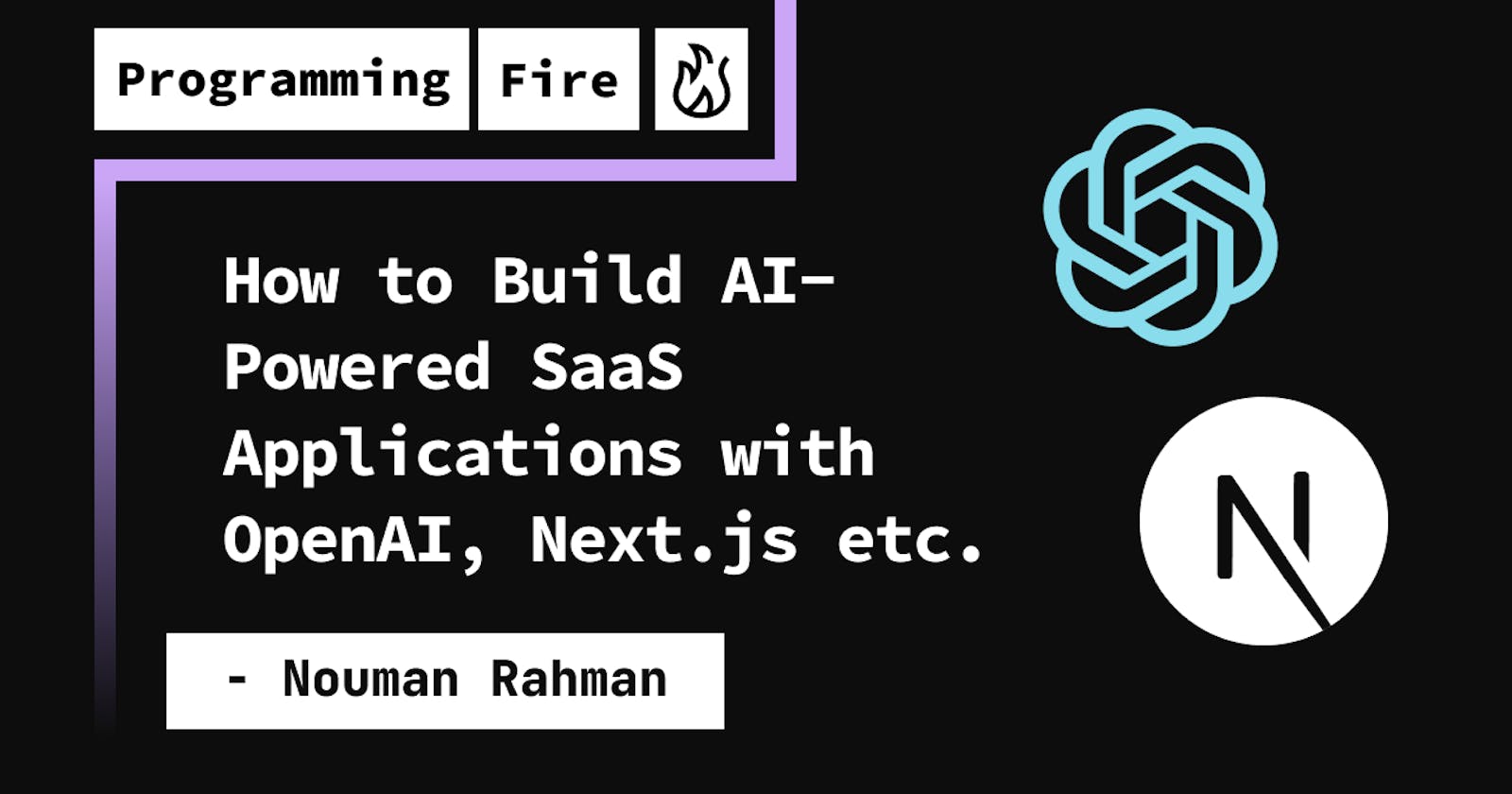In the ever-evolving landscape of software as a service (SaaS) applications, integrating artificial intelligence (AI) has become a game-changer. OpenAI, a leader in AI research and development, provides powerful tools and models that can take your SaaS application to the next level. In this article, we'll explore how you can harness the potential of OpenAI to build AI-powered SaaS applications that offer unique and valuable features.
Understanding OpenAI
OpenAI is known for its groundbreaking AI models and APIs that enable developers to access state-of-the-art natural language processing (NLP) capabilities. Two key offerings from OpenAI are GPT-3 and Codex, both of which can be instrumental in building AI-powered SaaS applications.
GPT-3: This language model is famous for its ability to generate human-like text. It can answer questions, generate code, create content, and more. GPT-3 is versatile and can be integrated into a wide range of applications.
Codex: Powered by GPT-3, Codex is specifically designed for code generation. It can understand and generate code in multiple programming languages, making it a valuable tool for software development.
Building AI-Powered SaaS Applications
Now, let's dive into the steps to build AI-powered SaaS applications with OpenAI, utilizing technologies like React, Next.js, and Tailwind CSS.
1. Identify Your Use Case
The first step is to identify the specific use case for AI in your SaaS application. Consider how AI can enhance the user experience, automate tasks, or provide unique insights. Common use cases include:
Chatbots: Use GPT-3 to create conversational AI that can handle user queries and provide support.
Content Generation: Leverage GPT-3 to automatically generate blog posts, reports, or product descriptions.
Code Generation: Utilize Codex to assist developers in writing code, generating code documentation, or even automating code refactoring.
Data Analysis: Use AI to analyze and visualize data, providing valuable insights to users.
2. Access OpenAI APIs
To integrate OpenAI into your SaaS application, you'll need to access their APIs. OpenAI provides detailed documentation and guides on how to use their APIs effectively. You'll need to sign up for an API key, which you can use to make API requests.
3. Develop Your Application with React and Next.js
With a clear use case and access to OpenAI APIs, you can start developing your SaaS application. React and Next.js are excellent choices for building web applications with a focus on performance, SEO, and developer experience.
React: React is a popular JavaScript library for building user interfaces. Its component-based architecture makes it easy to create reusable UI components.
Next.js: Next.js is a React framework that simplifies server-side rendering, routing, and deployment. It's an ideal choice for building SEO-friendly and fast-loading web applications.
4. Create a Stylish UI with Tailwind CSS
To ensure your SaaS application has a sleek and responsive design, consider using Tailwind CSS. Tailwind CSS is a utility-first CSS framework that allows you to style your components quickly and consistently.
Integrate Tailwind CSS into your Next.js project by installing it via npm or yarn and configuring it according to your project's needs.
5. Integrate OpenAI into Your Application
Integrate the OpenAI API calls into your application's code. For example, if you're building a chatbot, you can send user queries to GPT-3 and receive responses that you can display in the chat interface.
Here's a simplified example of how you might use the GPT-3 API in a JavaScript-based chatbot within a Next.js application:
import { useState } from 'react';
async function handleUserQuery(query) {
// Make a request to GPT-3
const response = await fetch('https://api.openai.com/v1/engines/davinci/completions', {
method: 'POST',
headers: {
'Content-Type': 'application/json',
'Authorization': 'Bearer YOUR_API_KEY_HERE',
},
body: JSON.stringify({
prompt: query,
max_tokens: 50, // Adjust as needed
}),
});
const data = await response.json();
const responseText = data.choices[0].text;
// Handle the response, e.g., display it in the chat interface
return responseText;
}
function Chatbot() {
const [userInput, setUserInput] = useState('');
const [chatHistory, setChatHistory] = useState([]);
const handleSend = async () => {
const response = await handleUserQuery(userInput);
setChatHistory([...chatHistory, { text: userInput, isUser: true }, { text: response, isUser: false }]);
setUserInput('');
};
// Render the chat interface with chatHistory and input field
}
export default Chatbot;
6. Test and Refine
Testing is crucial to ensure that the AI-powered features of your SaaS application work as intended. Collect user feedback and refine your implementation to improve accuracy and user experience.
7. Deploy and Scale
Once you're satisfied with the performance and functionality of your AI-powered SaaS application, it's time to deploy it to production. Next.js makes deployment straightforward, and you can use services like Vercel, Netlify, or AWS for hosting. Monitor its usage and scale your infrastructure as needed to accommodate growing user demands.
Benefits of AI-Powered SaaS Applications
Building AI-powered SaaS applications with OpenAI, React, Next.js, and Tailwind CSS offers several benefits:
Enhanced User Experience: AI can provide personalized recommendations, automate tasks, and improve user interactions, leading to a better overall experience.
Efficiency: AI can automate repetitive tasks, reducing manual workloads and increasing efficiency.
Competitive Advantage: Offering AI-powered features can give your SaaS application a competitive edge in the market.
Data-Driven Insights: AI can analyze data and provide valuable insights that help users make informed decisions.
Conclusion
Integrating OpenAI into your SaaS application, powered by technologies like React, Next.js, and Tailwind CSS, opens up a world of possibilities. By identifying the right use cases, accessing OpenAI's powerful APIs, and following best practices in development and deployment, you can create AI-powered SaaS applications that stand out in the market and provide immense value to your users. Embrace the future of SaaS with AI, and watch your application thrive.
